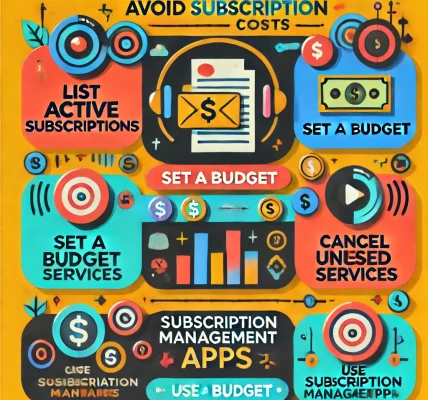Living paycheck to paycheck can feel overwhelming, especially when there’s not much room left for savings or unexpected expenses. However, the good news is that creating a budget, even under these circumstances, is possible and can dramatically improve your financial situation. In this blog post, we’ll guide you through how to create a budget that works for you, even if your income is tight.
Why Budgeting Is Important When You’re Living Paycheck to Paycheck
When you’re living paycheck to paycheck, every dollar counts. Without a clear budget, it can be easy to fall into the trap of overspending on non-essentials or letting small financial problems snowball. A budget helps you:
- Track your spending: Knowing exactly where your money is going allows you to identify areas where you can cut back.
- Prioritize your needs: It ensures that your essential expenses are covered first, such as rent, utilities, and groceries.
- Create a savings plan: Even a small amount saved each month can build an emergency fund, preventing financial stress when unexpected expenses arise.
Step-by-Step Guide to Creating a Budget on a Tight Income
Follow these simple steps to build a budget that helps you live within your means, even if you’re barely making ends meet.
1. List Your Sources of Income
The first step in budgeting is knowing exactly how much money you have coming in each month. List all your sources of income, such as:
- Your salary or wages
- Side jobs or freelance income
- Any passive income (investments, dividends, etc.)
Once you know the total amount of money you’re working with, it’s easier to allocate it towards necessary expenses.
2. Track Your Expenses
Next, start tracking all of your expenses. This includes both fixed and variable costs. Fixed expenses are regular payments that are consistent each month (rent, utilities, loans), while variable expenses can fluctuate (groceries, transportation, entertainment).
- Fixed Expenses: These should be your priority since they are non-negotiable.
- Variable Expenses: These are more flexible and can be adjusted as needed.
Tracking your expenses helps you identify areas where you might be overspending and where you can make cuts.
3. Cut Back on Non-Essential Spending
When you’re living paycheck to paycheck, it’s crucial to separate needs from wants. Cut back on non-essential spending, such as:
- Dining out or takeout: Instead, cook at home.
- Subscriptions: Review your subscriptions (Netflix, gym memberships) and cancel any you don’t use or need.
- Impulse buys: Stay away from online shopping, especially for non-essentials.
Every small saving adds up over time and helps you stretch your income further.
4. Prioritize Your Expenses
Start by paying for your basic needs first—these include rent, utilities, food, and transportation. Then, allocate funds to other essential areas, such as:
- Debt payments: If you have outstanding loans, prioritize them after your essentials. Paying down high-interest debt should be a top priority.
- Emergency fund: Once you’ve taken care of essentials, try to put aside a small portion for savings each month, even if it’s just $10 or $20. Over time, this will build up and act as a cushion in case of emergencies.
5. Set Realistic Financial Goals
While it may seem hard to save when you’re living paycheck to paycheck, it’s important to set financial goals. Start with small, attainable goals, such as:
- Saving $50 a month for an emergency fund
- Paying off a small credit card balance
- Reducing monthly discretionary spending by 10%
Celebrate each milestone you reach—this helps keep you motivated and on track.
6. Look for Ways to Increase Your Income
If you’re finding it difficult to make ends meet, consider ways to increase your income:
- Freelance or side jobs: Websites like Upwork, Fiverr, or TaskRabbit offer platforms for earning extra income.
- Sell unused items: Look around your home for things you no longer need and sell them online or in a yard sale.
- Ask for a raise or a better-paying job: If your skills and performance warrant it, consider discussing a salary increase with your employer or looking for higher-paying job opportunities.
Increasing your income, even in small ways, can significantly ease the strain of living paycheck to paycheck.
Use Budgeting Tools and Apps
There are many budgeting apps and tools designed to help you track your spending, set savings goals, and stay on top of your finances. Some of the most popular tools include:
- Mint: This free app connects to your bank accounts and categorizes your transactions, providing a clear picture of your spending.
- EveryDollar: Created by financial expert Dave Ramsey, this app helps you create a zero-based budget and stick to it.
- YNAB (You Need A Budget): This app focuses on helping you give every dollar a job, so you’re intentional with your spending and savings.
These tools can help you manage your money more effectively and stick to your budget without feeling overwhelmed.
How to Stay Motivated While Budgeting
Living paycheck to paycheck can feel discouraging, but it’s important to stay motivated. Here are a few tips:
- Track your progress: Each time you pay off a debt or reach a small savings goal, celebrate! These milestones will keep you moving forward.
- Visualize your goals: Whether it’s a debt-free future or a vacation fund, keep your financial goals in sight. This will remind you why you’re making sacrifices today for a better tomorrow.
- Stay accountable: Share your goals with a friend, family member, or financial advisor. Having someone to check in with can keep you on track.
Conclusion: Take Control of Your Finances
While living paycheck to paycheck can feel like a trap, creating a thoughtful budget can help you gain control over your finances. By prioritizing needs, cutting back on unnecessary spending, and setting realistic goals, you can start building a more secure financial future.



